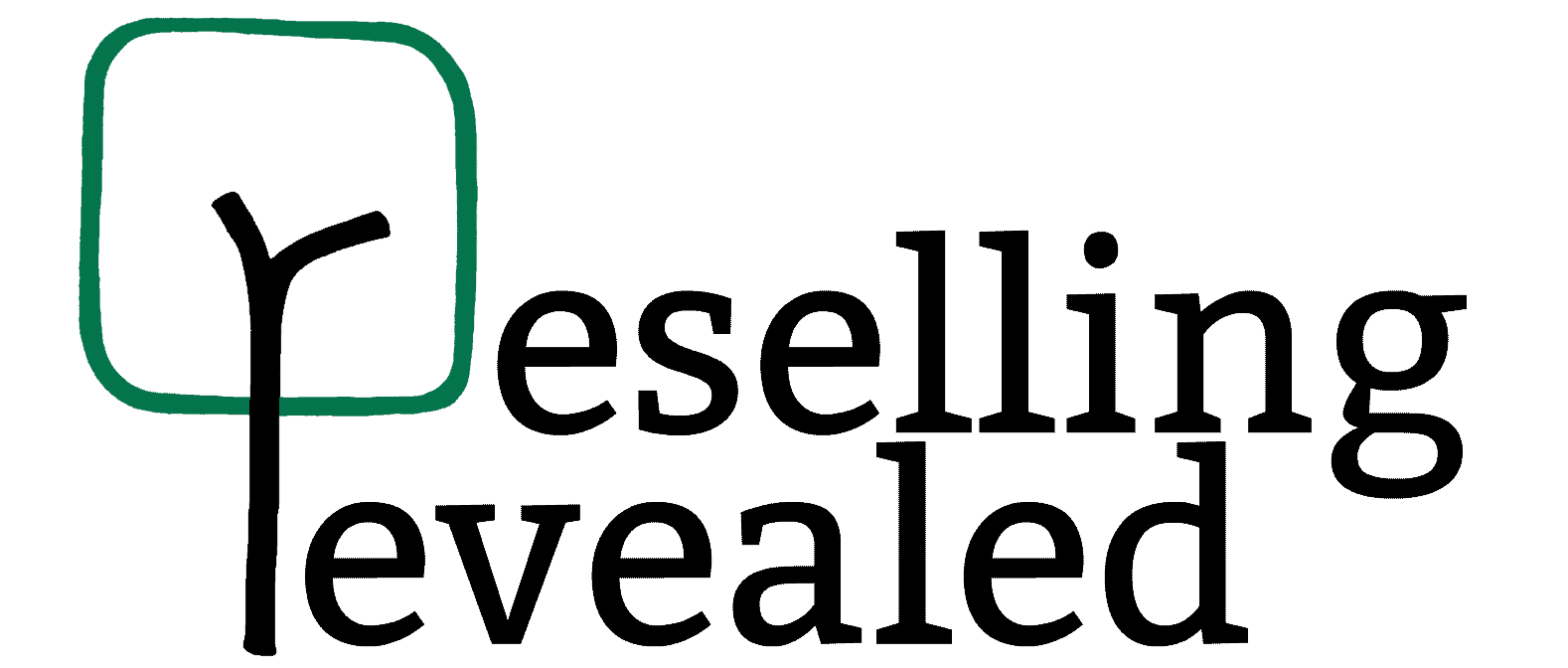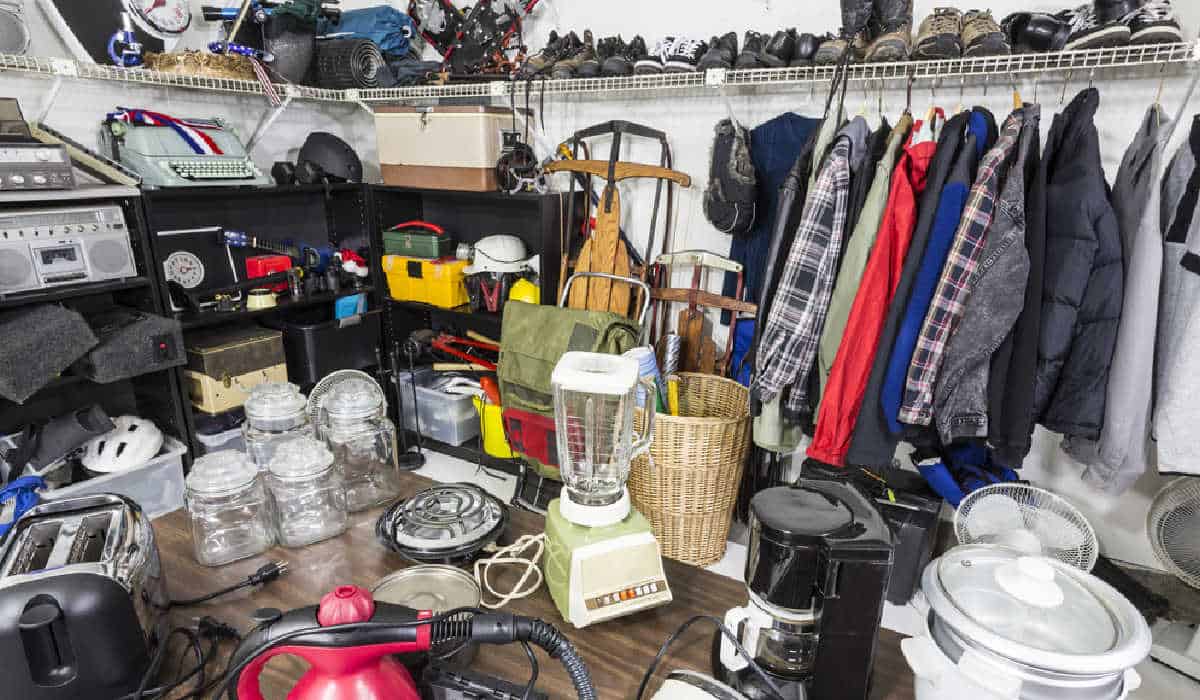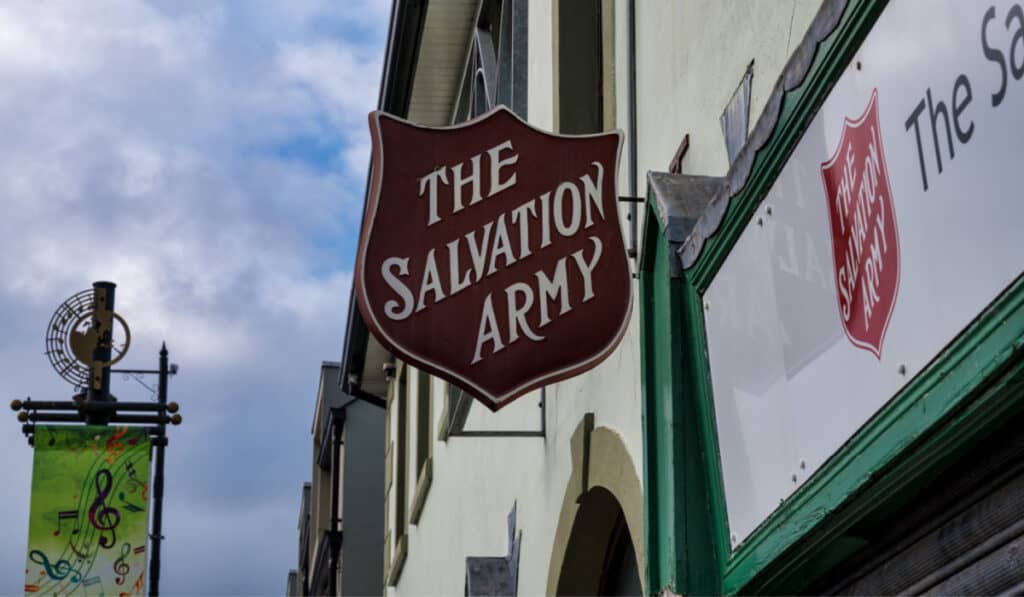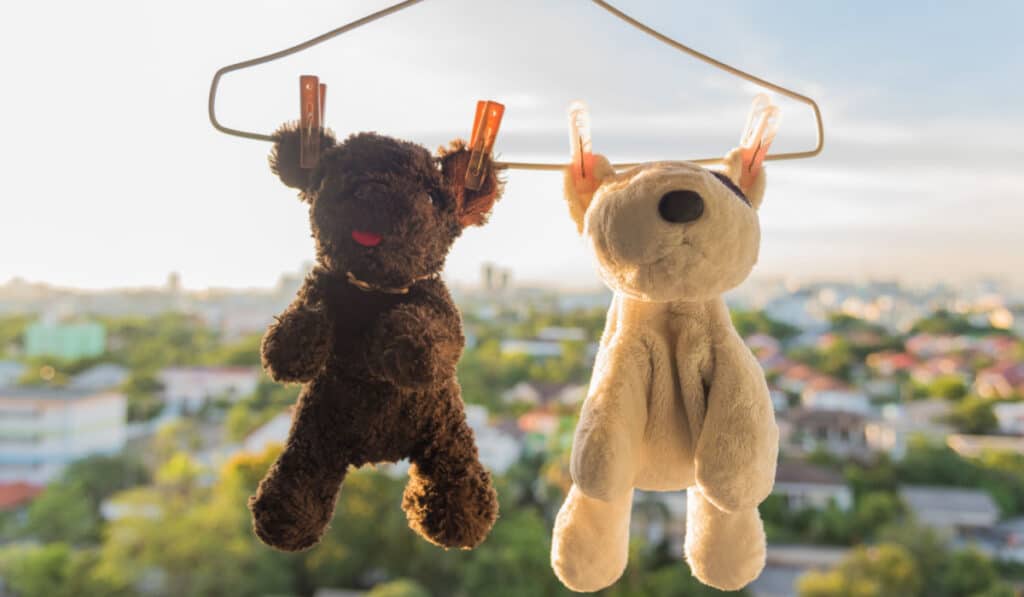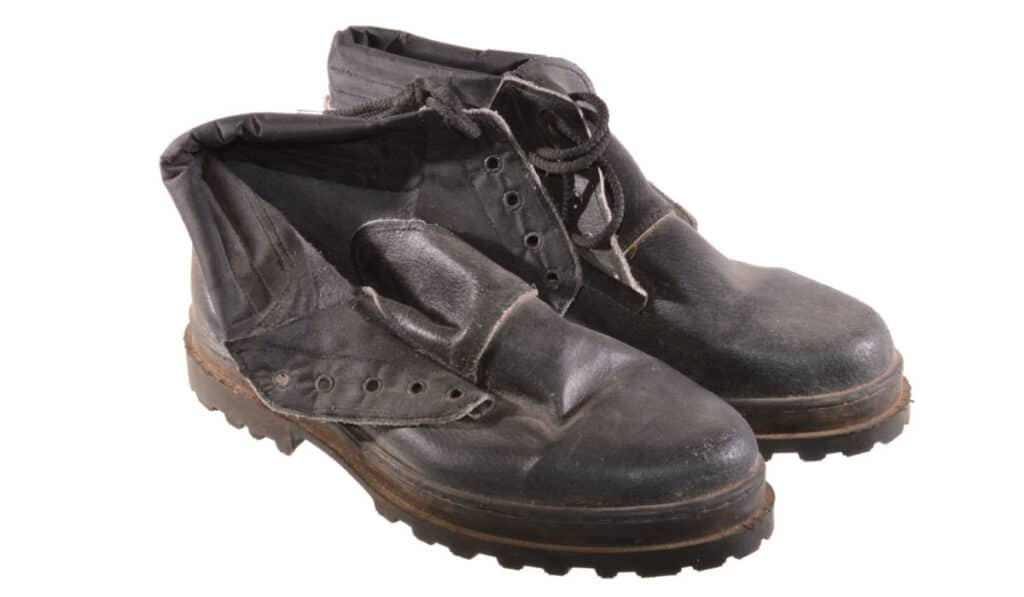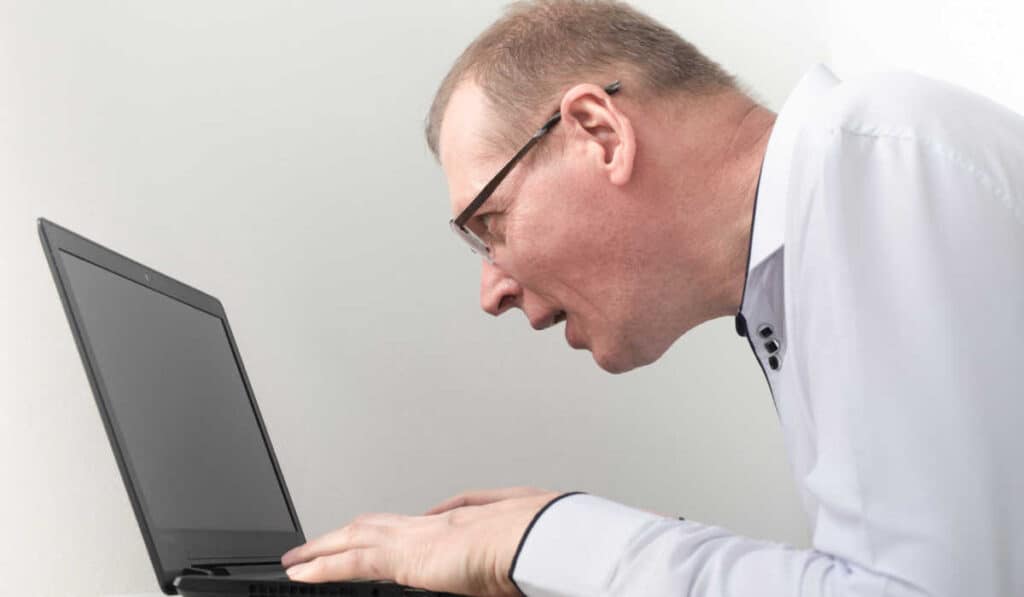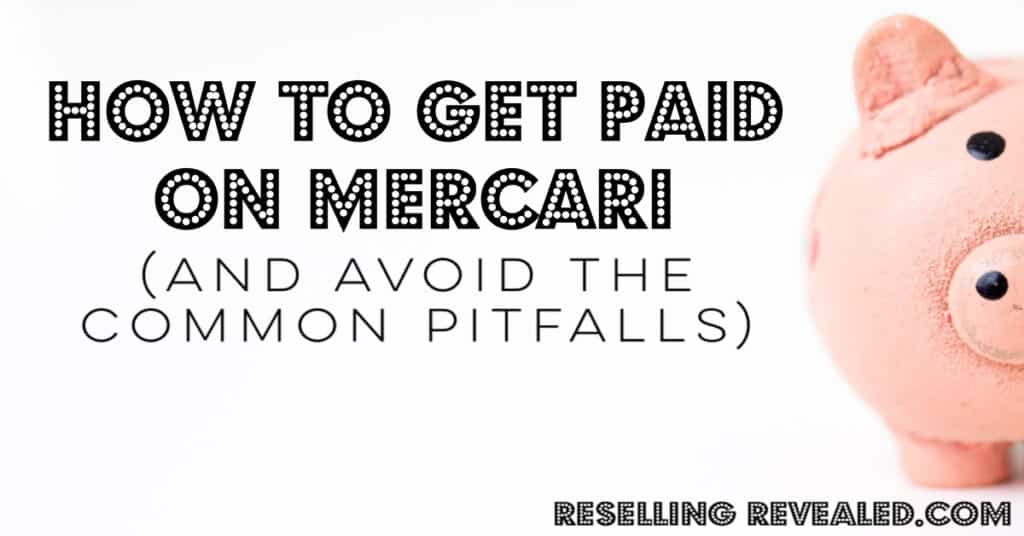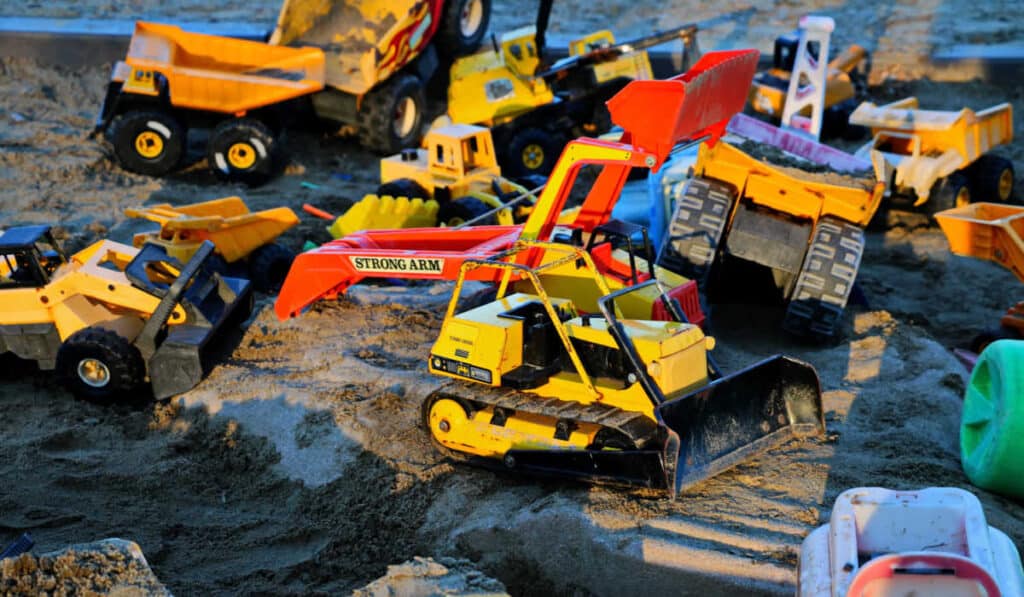As an Amazon Associate I earn from qualifying purchases.
No matter how much you love thrifting I’m sure you’ve been disgusted by something you’ve found while looking for treasures.
I’ve had the misfortune to find a container of old baby teeth, used sex toys, and even a shoe full of poop.
Oh and don’t forget period-stained pants. So many period-stained pants.
It’s a well-known (but unsavory) fact that thrift stores don’t wash the clothes that they sell. In fact, they don’t clean anything. If they get something that’s too dirty to sell then it just goes straight into the dumpster.
But that’s just if they notice how dirty it is. What about all the dirty things they don’t notice?
Or, even worse, what about the plethora of unnoticeable things that can make a thrift find gross? Dandruff, bed bugs, butt sweat, toe funk…you can find them all.
But since that won’t stop intrepid deal-hunters such as you and I, we are left with no other choice but to learn how to clean the thrift store items that we find.
Let’s look at the best way to clean thrifted clothes, shoes, furniture, toys, and everything in between!
How To Clean Your Thrift Finds
First off, just about anything can be cleaned (or repaired for that matter). The question becomes whether or not it is worth it.
If you are questioning whether or not something from a thrift store can be cleaned enough to be safe, don’t bother. Err on the side of buying things that are in good condition and can easily be washed, disinfected, or cleaned.
Here are 15 things that are, in general, quite easy to clean:
1. Clothes
In general, thrifted clothes can be cleaned by running them through your typical wash cycle with your laundry. Fabric allowing, hot water, and a heated dry cycle will eliminate most dirt, smells, and microbes. If thrifted clothing needs a more thorough cleaning you may consider adding bleach or white vinegar to the wash cycle.
Personally, I wash non-stained clothing on a cold cycle and dry them on an air-dry setting. This ensures that the clothing doesn’t shrink and will last as long as possible.
If you need to remove smells in colored clothing (meaning that bleach is not an option) simply add half a cup of white vinegar to the wash. Not only will it soften clothing but it is less harsh than bleach, resulting in less wear and tear.
As the majority of people donate clothes that are freshly laundered (or straight out of their closet) I typically just check a thrifted clothing item well before paying and avoid items that would need more intensive cleaning.
2. Shoes
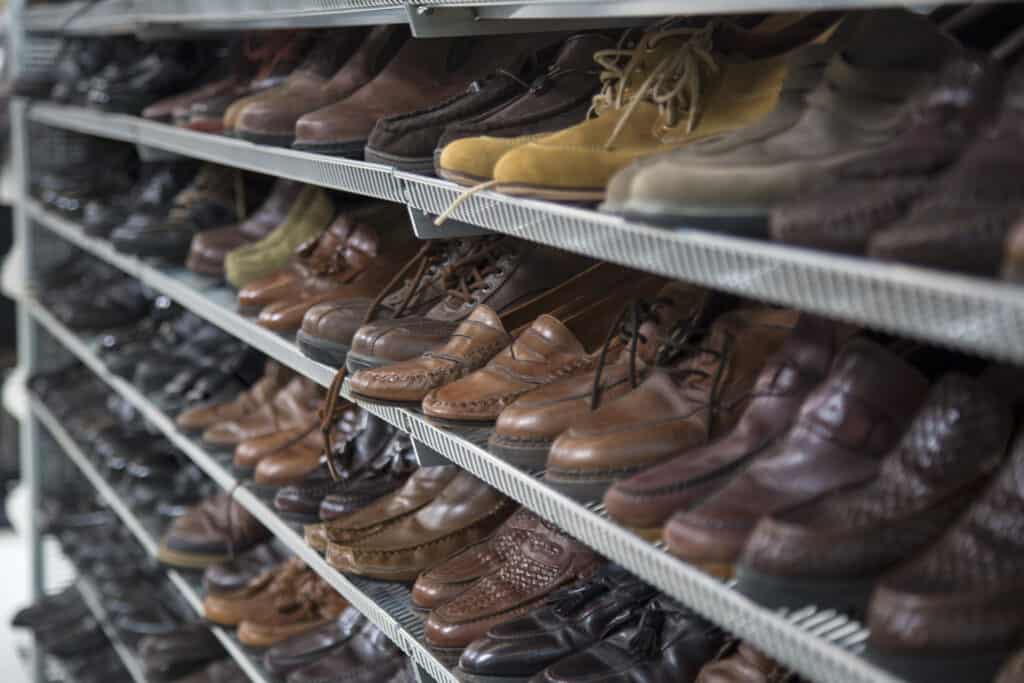
If a pair of thrifted shoes needs extensive cleaning I typically just won’t buy them. It’s just not worth it.
However, as I’ve flipped close to a thousand pairs of shoes on eBay in the past few years I know how hard it can be to leave behind something that is a great deal, regardless of dirt or level of wear.
So what’s the best way to clean thrifted shoes?
If your main concern is dirt and scuffs, clean the shoes in the sink with an old toothbrush and milk laundry detergent. Wet boots or shoes can then easily be reshaped by stuffing them with newspaper and allowing them to dry overnight.
3. Leather & Suede Jackets
If you’re going to buy a leather jacket that needs cleaning, prepare to pay a specialist at a dry-cleaning business to take care of it for you. While there are some DIY kits out there to clean leather they will save very little money and offer far inferior results.
Whichever method you choose to clean a thrifted leather jacket be sure to factor it into the purchase cost.
In general, the cost to have a leather jacket professionally cleaned falls between $80-100. The most important factors in the cost are the level of cleaning that needs to be done, the type of leather to be cleaned, and any embellishments or special characteristics that the jacket may have.
Unless you are getting a great deal it’s easy for a cheap thrifted leather jacket to become a clean but overpriced closet ornament.
4. Earrings
Buying earrings from a thrift store has always seemed a bit like sharing a toothbrush. Getting something that was once on the inside of someone else’s body and putting it in your own isn’t exactly my cup of tea.
Add in the fact that an infected piercing can quickly become a puss-filled abscess and I become interested quite quickly in learning how to clean thrifted earrings and old jewelry.
Luckily, thrifted earrings can be cleaned extremely quickly and easily. As long as there are no visible chunks on them.
In general, earrings can be sterilized by placing them in a small container of rubbing alcohol or hydrogen peroxide and letting them sit for 10 minutes. Designs or crevices can be cleaned with a small soft brush. After cleansing, wipe down the posts with a cloth to remove any residue.
5. Hats
Honestly, you’re probably not going to catch a disease from a hat. You might catch a case of grossness though.
Buying a thrifted hat means that you are nearly guaranteed to come in contact with someone else’s “excretions”. Sweat, skin oils, dandruff, or even just plain old dirt are found in nearly every hat that has been worn, no matter how clean it is.
If you want to clean a thrifted hat without damaging it, soaking it is your best bet. For general cleaning, 10 minutes in cool water with gentle laundry detergent is sufficient. For deeper cleaning opt for a color-safe bleach such as OxiClean and soak your hat for up to an hour to remove the grim. Set or localized stains can be cleaned with a toothbrush or cloth.
I will also give you two warnings here about cleaning a thrifted hat. First, if it’s a vintage hat with a cardboard brim you should avoid submerging it to clean it. Secondly, avoid using hot water as most hats are not colorfast and you will end up with a faded lid for your dome.
6. Couches, Chairs, & Furniture
Cleaning thrifted furniture can be an expensive proposition that turns your amazing new living room piece into a costly place to sit. But it doesn’t have to be.
You can clean a thrifted couch or chair easily with just a few household items. And, if it can’t be cleaned easily? You can have a couch professionally cleaned for between $100-200. Just be sure to factor it into your purchase price so you know whether it’s worth it or not! On the plus side, you can buy a structurally perfect but dirty couch that no one else would look at because you know you can easily have it freshened up.
Also, learning to clean furniture on your own is a great first step if you’re looking to start flipping furniture as a side hustle.
8. Glassware
If you’re anything like I am…I’m sorry. You probably have a huge wall full of thrifted mugs and just can’t help yourself. Every time I’m sourcing for things to flip on Mercari or on my eBay store I check out the glassware and come home with something that I tell myself I’ll sell. Spoiler alert, I don’t sell it.
Which leaves me to sanitize and clean my thrifted glassware.
Glassware is typically easy to sanitize as the surface does not readily harbor dirt or germs. Hot water and dish soap are typically sufficient to clean any thrifted glassware. If you want to be extra safe you can sanitize your glassware in a bath of hydrogen peroxide, rubbing alcohol, or white vinegar.
Just be careful about pouring boiling water on a cold piece of glassware to sanitize it as you run the risk of it cracking on you.
9. Purses
Figuring out the best way to clean a thrifted purse is a difficult proposition with many answers.
The all-encompassing answer is: it depends on the material. The methods differ drastically if you’re cleaning leather, fabric, or wicker.
So the best advice I can give you for cleaning thrifted purses will be in the form of several tips that you can apply (or not) based on whether they fit your situation.
- A 50/50 mix of vinegar and water can be safely used down to wipe down most forms of leather and fabric. It helps remove odors and stains without being too harsh on the material.
- Most fabric purses can be hand washed in the sink and airdried.
- Leather purses can be cleaned with saddle soap and conditioned, the same way that a pair of leather shoes would be. (check out our leather restoration method)
- Many dry cleaners will also clean handbags or purses
And, last but not least, you can always try the “soak” method of cleaning years of grime (and possibly smell) from a thrifted purse or handbag…
10. Mattresses
For most people, buying a thrift-store mattress is not really in the cards. I have purchased a couple of used mattresses (seriously, who can afford a new Purple mattress?) but they have all come from private sellers.
So what if you find a great deal at a thrift store? How do you clean a thrifted mattress?
First off, don’t assume that the mattress is clean, no matter how good it looks. A mattress can be covered in dust mites, sweat residue, skin cells, pet dander, breast milk, bacteria, and even pee stains while looking clean under normal light.
First off, vacuum the entire mattress (both sides) to remove anything significant. Next, mix up a disinfectant spray of 50% water and 50% white vinegar. Not only will this help get rid of any nasty bugs but it can deodorize the mattress as well.
If you can spray the mattress down outside the sunlight will also be helpful in killing any pathogens that might be hiding.
After disinfecting the mattress, let it air dry for a couple of hours (or overnight) and hit it with a fabric freshener such as Febreze.
Now, stick a mattress cover (or mattress topper) over the whole thing and sleep well!
11. Toys
If you have kids and aren’t a millionaire you’d probably be benefited by buying thrift store stores. Saving 90% or more when buying things that are going to be destroyed anyway sounds like a good deal to me!
However, you’ll want to thoroughly clean any thrifted toys before handing them over to your children (especially if they’re little).
The majority of toys at thrift stores can be cleaned by wiping them off with disinfectant wipes. For more significant cleaning submerge toys (without electronics) in a solution of 1 gallon of water with 1/2 cup of bleach. After soaking them for 5 minutes rinse them with warm water and let them air dry before returning them to your children.
Wooden or fragile toys are more difficult to clean. In general wooden toys should be passed on but, if you’re insistent, try cleaning them with a spray bottle containing a 50/50 solution of vinegar and bleach before wiping them off.
12. Kitchen Appliances
Most thrifted kitchen appliances seem to come from homes with highly suspect cleaning standards. I’m totally comfortable buying most appliances from thrift stores but they won’t see any use until I’m sure that they are 100% clean.
In general, hot water and dish soap are enough to clean thrifted kitchen appliances.
Most appliances have specific cleaning or disinfecting instructions in the owner’s manual (which can be found online). Adhering to the manufacturer’s instructions will (hopefully) stop you from damaging your new used appliance.
13. Electronics
Cleaning electronics, in general, is a tricky proposition. This problem becomes even stickier if you’re looking at cleaning thrift store electronics that may have unknown problems, flawed spots, or special cleaning instructions that you’re not aware of.
While special electronics cleaning solutions can be purchased online you can easily make your own at home with just two ingredients.
Simply mix one part of distilled water with one part of rubbing alcohol. This will give you a solution that disinfects effectively while still evaporating quickly.
Using a cloth with your DIY cleaning solution to wipe things down is really the extent of what I’m comfortable with when cleaning thrifted electronics. Beyond that, you’re on your own! (or better yet, you’re relying on a professional to advise you)
Things That Can’t Be Cleaned:
While I’m not a big believer that there are things that absolutely shouldn’t be purchased second-hand, there are a few things that I would recommend that people should avoid. Not that these are unusable, just that they probably require more care and attention than is warranted.
Wooden Kitchen Items. The porous nature of wood items that have been used around food (especially wooden cutting boards) makes them extremely difficult to clean and sanitize. I typically recommend avoiding wooden items that have had “wet” foods in or around them if you’re planning to use them in the kitchen.
Vintage/Antique Toys. Antique toys (or even home decorations) found at thrift stores commonly have unsafe levels of lead (typically in paint) or other chemicals which are no longer legal to use. Unless you’re a collector or planning to use the item as a display piece, give it a pass.
Car Seats/High Chairs. Many thrift stores refuse to accept car seats or high chairs as donations because they are a huge liability. Many kids’ items have had recalls or have been used to the point that they are no longer safe and you, as a thrifter, have no way of knowing. This goes beyond cleaning your thrifted item and trends toward being downright dangerous. I would also expand this blanket ban to include items like baby mobiles and dribs.
Kitchen Items With Nooks & Crannies. I recently bought a super clean (looking) pressure cooker to flip on eBay. When I got home and tried to clean it, however, I ended up using a screwdriver to take off the bottom part of the lid and found it chock full of mold. In the end, it was totally unsalvagable and ended up going into the garbage. Be sure to think about areas that steam or food could get that would be difficult to clean.
You can check out that nasty pressure cooking (I took a video) on our Instagram page.
Conclusion
In general, cleaning up your thrifted items is no different than cleaning something that you already owned. A bit of cleaner, some disinfectant, and some elbow grease will get almost everything that you can find at a thrift store usable again.
Happy treasure hunting!
